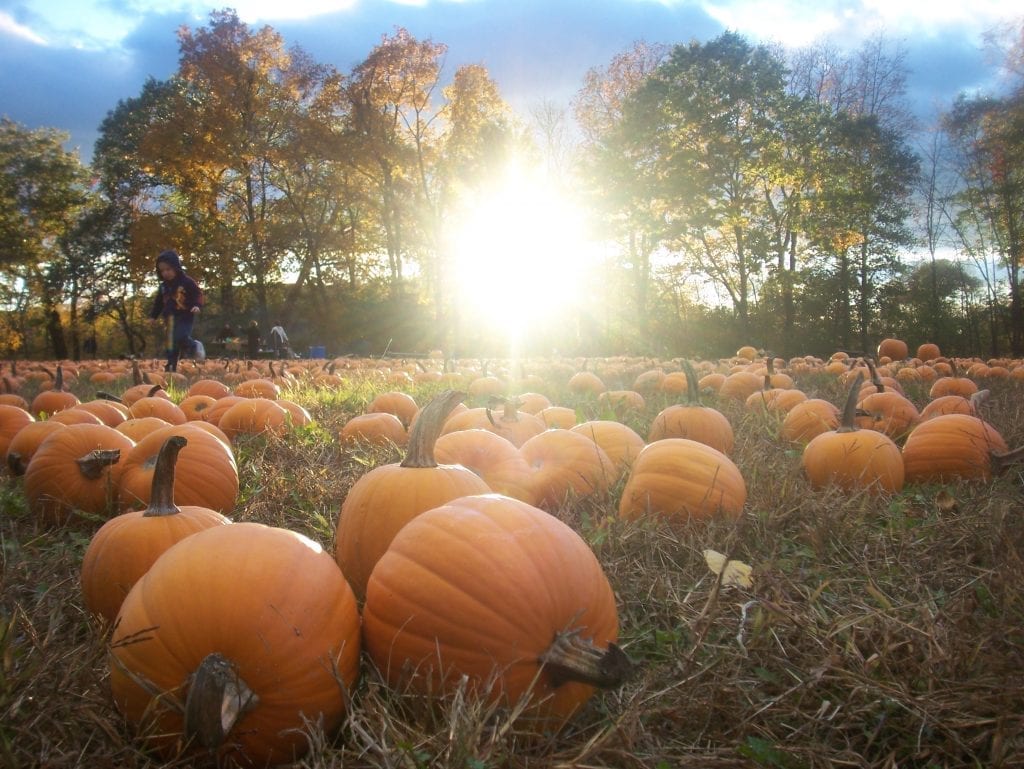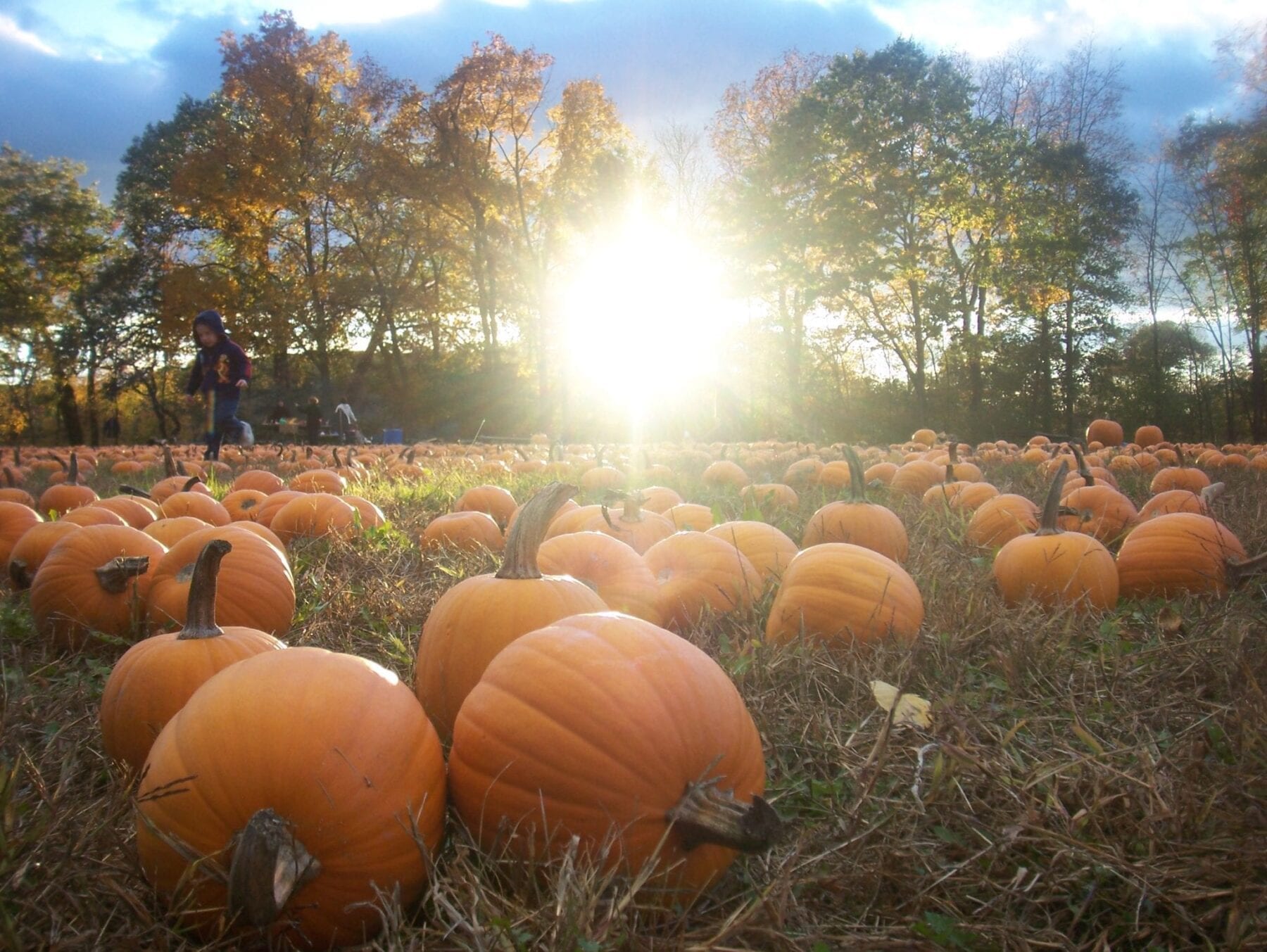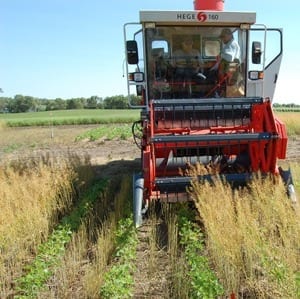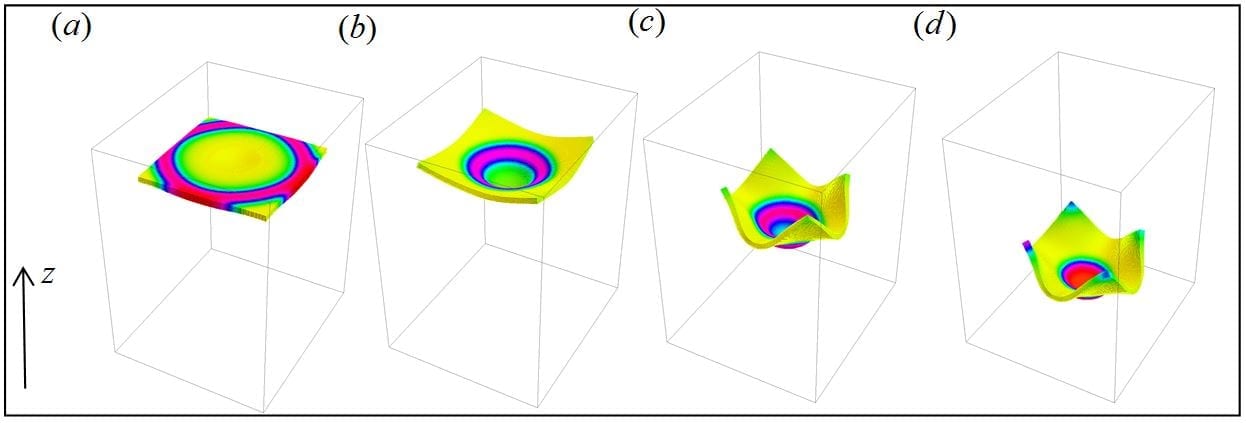
Much attention has been given to dedicated, perennial bioenergy crops to meet the revised Renewable Fuel Standard mandating production of 36 billion gallons of biofuel by the year 2022. Even so, concern remains over the impending need to convert as much as 30 million acres of U.S. crop land, which would include food crops, to land for perennial energy crops in order to meet that demand.
Researchers realize that biomass feedstocks will need to come from many different sources, including crop residues, forest residues, and municipal waste, for example, said Marty Williams, a University of Illinois crop scientist and ecologist with the USDA-Agricultural Research Service. The use of double-cropping systems—a winter annual biomass crop is grown then harvested in the spring, followed by a summer annual crop—has been suggested as an additional option.
Knowing that many large-seeded vegetables in the Midwest must be planted later than agronomic crops into warmer soils, Williams was interested in the possibility of developing a bioenergy feedstock/vegetable double-cropping system. He explained that no such system had been developed and tested yet.
“Some vegetables have relatively short growing seasons, too. Rather than the standard fallow period for certain vegetables, what about integrating a bioenergy crop as a part of a double-cropping system?” Williams said.
Williams chose a vegetable crop popular in the state of Illinois, pumpkin, to be used in the double-cropping system study. “We took a fairly simplistic look at comparing this bioenergy/vegetable double-cropping system with traditional vegetable production using processing pumpkin,” Williams explained. “Illinois leads the nation in pumpkin production, providing some 90 percent of the processing pumpkin in the United States.”
Field trials were conducted over three environments. During the study, Williams compared crop productivity and weed communities in four different pumpkin production systems, varying in tillage, cover crop, and bioenergy feedstock/pumpkin double-cropping. A fall-planted rye (Secale cereale) mix was used as the biomass feedstock.
“In the end, winter rye may not be the best feedstock crop to use,” he explained. “It was more of a model crop for us for our system. It grows well and has several desirable traits. Seed is relatively inexpensive and the plant is hardy.”
Interestingly, the researchers saw pumpkin yields in the double-cropping system were comparable to conventional pumpkin production. However, the biomass feedstock also yielded an average of 4.4 tons per acre of dry biomass prior to pumpkin planting. “We saw a theoretical yield of 349 gallons of ethanol per acre, and a higher farm gate value than typical pumpkin production,” Williams said.
“It looks promising,” he added. “The biomass yield wasn’t as high as something like Miscanthus, but we’re producing feedstock and not taking land away from food production. Moreover, the cropping systems were not optimized, such as for soil fertility, so our economic estimates are likely conservative.”
Read more: Food and fuel: A model for bioenergy feedstock/vegetable double-cropping systems
The Latest on: Bioenergy feedstock/vegetable double-cropping systems
[google_news title=”” keyword=”Bioenergy feedstock/vegetable double-cropping systems” num_posts=”10″ blurb_length=”0″ show_thumb=”left”]
via Google News
The Latest on: Bioenergy feedstock/vegetable double-cropping systems
- Giant Heaps of Plastic Are Helping Vegetables Growon May 17, 2024 at 6:28 am
Plastic allows farmers to use less water and fertilizer. But at the end of each season, they’re left with a pile of waste.
- UK Government to Double Funds for Fruit and Vegetable Businesseson May 13, 2024 at 2:30 pm
Rishi Sunak will announce a doubling of government funding for the UK’s fruit and vegetable sector and urge retailers to back British produce to bolster food security. The funding of £80 ...
- Kalfresh Vegetables to establish $291m bioenergy plant in Scenic Rim after green light from state govon May 8, 2024 at 11:14 am
In an Australian-first, one of Queensland’s largest vegetable growers ... and dedicated feedstock crops into electricity, natural gas and biofertilizer. “In every crop we grow, 30 per cent ...
- Polyploidy in vegetables: Exploring genetics for crop evolution and breeding successon April 16, 2024 at 10:49 am
Highlighting polyploidy's potential to enhance crop yields and qualities, the review advocates for its application in vegetable breeding for economic and dietary benefits. Despite the strides in ...
- How Ratoon Cropping Can Benefit Your Vegetable Gardenon December 20, 2023 at 5:23 am
Ratoon cropping works well for vegetables like eggplant, peppers, asparagus, and okra, though you can also use it for some of your more delicate flowers, such as orchids, and large-scale crops ...
- We Are Asking For More Than Food From Our Farms. A New Cropping Option May Help Meet The Demandon August 17, 2022 at 6:00 am
The per acre yield of major US crops has been increasing for decades There is another way to expand crop production without adding new land - a farming method known as “double cropping.” ...
- Crop rotations for organic systemson May 29, 2022 at 6:25 pm
Crop rotation is a central component of all sustainable farming systems. Crop rotation offers the most effective, indirect method of minimizing pest, disease and weed problems and maintaining and ...
- Turnkey solutionon May 21, 2021 at 6:23 am
When San Francisco-based Brightmark LLC was looking for shredding equipment to use in its feedstock preparation system at its Ashley, Indiana, plant, the company prioritized consistency of particle ...
- Bumper Cropon June 7, 2020 at 10:37 am
ACI handles a wide variety of materials and produces recycled-content feedstock for sale and on a toll processing ... to a 99.98 percent purity level," says Melton. "The separation system we have will ...
- Is double-cropping a possibility?on October 25, 2018 at 4:53 am
But while the returns from trying to carry out some double cropping like this might be finely balanced, sowing these crops has also highlighted another phenomenon. Round the country – and especially ...
via Bing News












